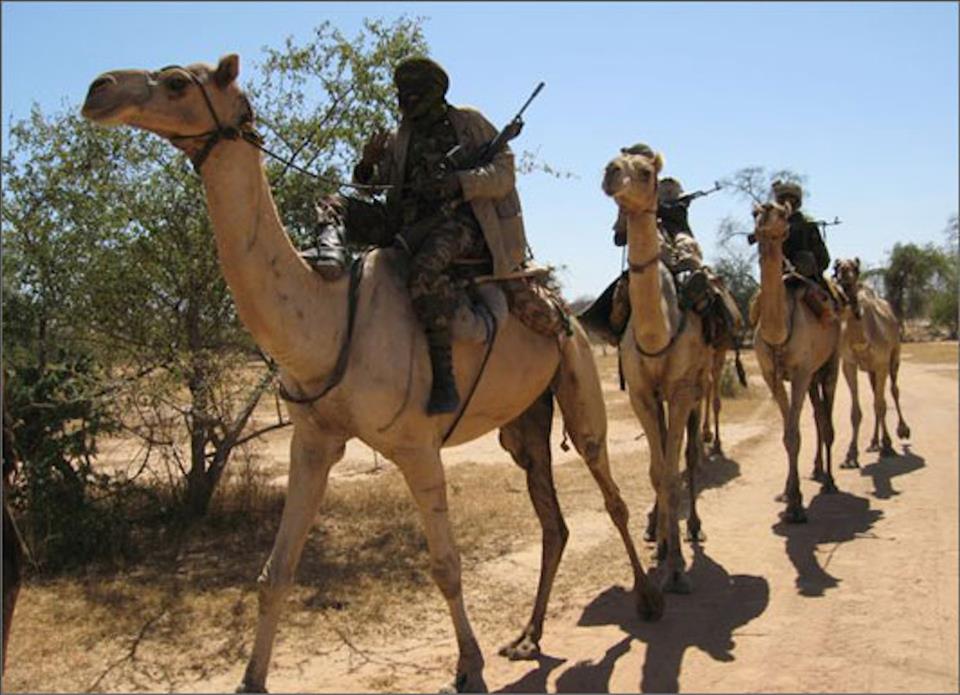(MENAFN- The Conversation) Former Sudanese president Omar al-Bashir was finally removed from power after six months of peaceful protest earlier in 2019. The protesters were hopeful for a new beginning but their quest for a civilian government has been shut down by a military council that includes Mohamed Hamdan Dagalo, generally called Hemedti, the leader of a paramilitary unit called the Rapid Support Forces that has its roots in the Janjaweed. Tsega Etefa explains who the Janjaweed are and why their presence doesn't bode well for peace in Sudan.
What is the history of the Janjaweed – when did the group come together and why?
The term janjaweed refers to the armed groups of the Arabs of Darfur and Kordofan in western Sudan. They call themselves fursan (horsemen).
Darfur, located in western Sudan, is a vast plain about the size of the US state of Texas. It is divided into three states: North Darfur, with its capital at El Fasher; West Darfur, with its capital at El Geneina; and South Darfur, with its seat at Nyala. North Darfur is semi desert, while the western and southern regions have rich, fertile lands. Darfur's population is estimated at 7 million. All Darfurians are black Muslims even though many identify as Arab based on genealogy linked to Saudi Arabia. Darfur shares borders with the Central African Republic, Chad and Libya.
The Janjaweed militia originated in the mid-1980s when Darfur went through devastating times due to a combination of factors. These included:
Chronic neglect and marginalisation by Khartoum,
mishandling of a severe drought in the Sahelia, and a subsequent famine, the outbreak of civil war between the north and south of Sudan,
increased migrant flows from Chad, Chadian rebels and Libyan military activities, and
the weakening of indigenous dispute solving mechanism.
All these events conspired to create a situation in which there was a collapse of law and order. Darfurians began to arm themselves. Several Arabs and non-Arab groups formed their own militias as self-defense.
The term Janjaweed eventually applied to all Arab armed groups irrespective of their origins. For example, they could be Chadian, Libyan or from other non-Sudanese backgrounds. But most of them were Arabs from Darfur. Most were Abbala camel herders of north Darfur who complained about a lack of their own abode (Dar) similar to the Fur and other Arab groups.
The famine and the collapse of law and order encouraged the formation of the groups as they could make land grabs and restock lost animals.
What role is the Janjaweed playing in the current Sudanese unrest?
The Janjaweed has a strong link to the current crisis. This is because for the past six years the government of former president Omar al-Bashir officially organised the Janjaweed militia as the rapid support forces under the command of the National Intelligence and Security Services. They were used to defeat rebel groups in the country. In 2013, al-Bashir selected Dagalo, an Abbala Arab of Hemeti clan, as the leader of the janjaweed . A year later it was constitutionally accepted as a regular force. Although the Rapid Support Forces consist of other government-backed militia groups, most of its members were Darfurians chosen by Dagalo.
According to human rights watch , the Rapid Support Forces committed war crimes in Darfur in 2014 and 2015 when civilians were displaced, raped, looted, and killed.
The recent killings of peaceful protesters in Khartoum are also believed to have been committed by the Rapid Support Forces. It is commanded by Dagalo, who is now the deputy chairman of the Transitional Military Council that forced al-Bashir out of power in April 2019. The council is chaired by Lieutenant General Abdel Fattah al-Burhan but many believe Dagalo has the real power. He is believed to be wealthy with close ties to Saudi Araba and the United Arab Emirates.
What role has the Janjaweed played in other Sudanese conflicts?
It played a big role in the Darfur conflict. When the Darfur rebels – made up of the Sudan Liberation Army and Justice and Equality Movement – escalated their attacks on government positions in April 2003, the government unleashed the janjaweed to target the Fur, Zaghawa, and Masalit villages.
The al-Bashir government intensified recruitment to help mobilise for its counter-insurgency war against the rebels. This included signing up criminals, convicts and prisoners, as well as appointing new village chiefs.
What links do the Sudanese military have to the Janjaweed?
Politicians and military officers played a considerable role in the recruitment, organisation, equipping and training of the Janjaweed. As for the army, it has carried out military operations together with the Janjaweed. For example, during Janjaweed attacks in Darfur the National Armed Forces provided air as well as ground support.
When the Rapid Support Forces were created, they were formally recognised as part of the national regular forces. This has meant that it's been well-supplied and well-equipped – much more so than in the early 2000s.
What does the involvement of the Janjaweed mean for democracy in Sudan – is there any hope for civilian rule?
It is heartbreaking to even think of the Janjaweed on the streets of Khartoum. The failure of the international community – including the African Union – to solve the Darfur crisis in the first place allowed the Janjaweed to rise to the national political stage. It's enough to create despair.
But there is always hope. It is a good sign that the Transitional Military Council and the opposition have agreed to resume talks . The army should hand over to civilian government as soon as possible.




















Comments
No comment